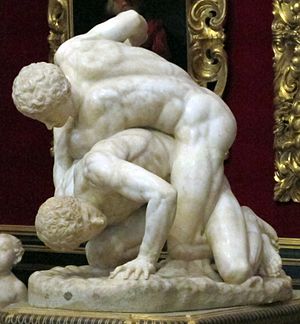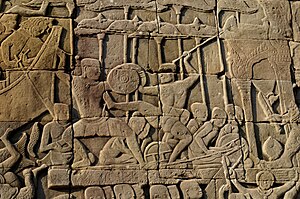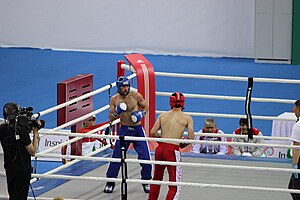
Grappling is a fighting technique based on throws, trips, sweeps, clinch fighting, ground fighting and submission holds.

Kickboxing is a full-contact combat sport based on punching and kicking. Kickboxing originated in the 1950s to 1970s. The fight takes place in a boxing ring, normally with boxing gloves, mouth guards, shorts, and bare feet to favor the use of kicks. Kickboxing is practiced for self-defense, general fitness, or for competition. Some styles of kickboxing include: Full contact karate, Muay Thai, Japanese kickboxing, Lethwei, Sanda, and Savate.

Martial arts are codified systems and traditions of combat practiced for a number of reasons such as self-defence; military and law enforcement applications; competition; physical, mental, and spiritual development; entertainment; and the preservation of a nation's intangible cultural heritage.
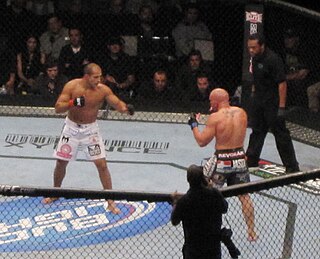
Mixed martial arts (MMA) is a full-contact combat sport based on striking, grappling and ground fighting, incorporating techniques from various combat sports from around the world. The first documented use of the term mixed martial arts was in a review of UFC 1 by television critic Howard Rosenberg in 1993.
The following outline is provided as an overview of and topical guide to martial arts:
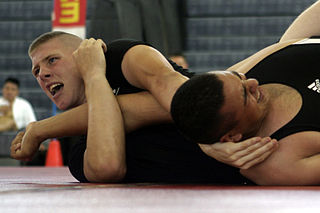
Submission wrestling, also known as submission grappling, submission fighting or simply grappling, is a competitive martial art and combat sport that focuses on ground fighting and submission techniques. It is a hybrid discipline that incorporates elements of various grappling arts such as various wrestling styles, judo, and Brazilian jiu-jitsu. Submission wrestling is practiced both as a competitive sport and as a training method for self-defence and mixed martial arts (MMA).

Sambo is a martial art with Soviet origins, an internationally practised combat sport, and a recognized style of amateur wrestling included by UWW in the World Wrestling Championships along with Graeco-Roman wrestling and freestyle wrestling.

Clinch fighting or trapping is the part of stand-up fighting where the combatants are grappling in a clinch, typically using clinch holds. Clinching the opponent can be used to eliminate the opponent's effective usage of some kicks, punches, and melee weapons. The clinch can also be used as a medium to switch from stand-up fighting to ground fighting by using takedowns, throws or sweeps.
Hybrid martial arts, also known as hybrid fighting systems or sometimes eclectic martial arts or freestyle martial arts, referred to as mixed martial arts or fighting systems that incorporate techniques and theories from several martial arts. While numerous martial arts borrow or adapt from other arts and to some extent could be considered hybrids, a hybrid martial art emphasizes its disparate origins.
German Ju-Jutsu is a martial art related to traditional Japanese Jujutsu, developed in Germany in the 1960s using techniques from Jujutsu, Judo, Karate and various other traditional and modern martial arts. Its governing body in Germany is the DJJV. Its competitive sport aspects are coordinated internationally by the JJIF ; Ju-jutsu under JJIF rules is a part of the World Games and World Combat Games. The system is taught to the German police forces.
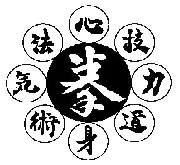
Nippon Kempo (日本拳法) is a Japanese martial art founded and created by Muneomi Sawayama in 1932. Sawayama was a judoka who had studied under Kenwa Mabuni, a karateka who would establish the Shito-Ryu school of Karate. There are multiple schools and groups based on the Nippon Kempo Association launched by Sawayama, and each has its own rules. It is typically practised wearing protective gear and gloves and allows full use of stand-up striking, throwing, and ground fighting.
Erik Paulson is an American mixed martial artist. He is the first American to win the World Light Heavyweight Shooto Championship in Japan.
This martial arts timeline is designed to help describe the history of the martial arts in a linear fashion. Many of the articles for particular styles have discussions of their history. This article is designed to help visualize the development of these arts, to help better understand the progression of the separate styles and illustrate where they interrelate.

Jujutsu, also known as jiu-jitsu and ju-jitsu, is a family of Japanese martial arts and a system of close combat that can be used in a defensive or offensive manner to kill or subdue one or more weaponless or armed and armored opponents. It was coined by Hisamori Tenenuchi when he officially established the first school of jiu-jitsu in Japan. A subset of techniques from certain styles of jujutsu were used to develop many modern martial arts and combat sports, such as judo, aikido, sambo, ARB, Brazilian jiu-jitsu, and mixed martial arts.
The World Combat Games is an international multi-sport event featuring combat sports and martial arts. The games were founded by SportAccord as a way of bringing various martial arts and combative sports to an international audience. The World Combat Games are also accompanied by a cultural program that reflects the ancient traditions and values of martial arts as well as their contribution to modern society. The games are recognised by the International Olympic Committee.
The first World Combat Games were held in Beijing, China, from August 28 to September 4, 2010. 136 gold medals were vied for by 1,108 competitors from all five continents.
Atemi Ju-Jitsu, in Japanese: Atemi (当て身) Jujutsu (柔術), also called Pariset Ju-Jitsu, was established in France in the 1940s by the late Judo and Ju-Jitsu legend Bernard Pariset to revive and preserve old martial techniques inherited from Feudal Japan.
Shintaro Higashi is a Japanese-American judo competitor and 6th degree black belt in judo for the United States in the 100 kg category. He is the head instructor at the Kokushi Budo Institute, a member of the New York Athletic Club, and a professor at Brooklyn College.

